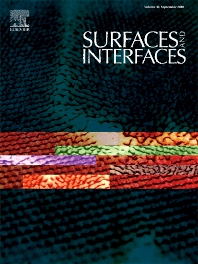TiO2eCoxOy (x=1, y=1 or x=3, y=4) composite photocatalysts have been synthesized via one step anodic anodization of TiCo alloys. The effects of the cobalt content in the alloy (5, 10 and 15 wt%), water content (2, 5 and 10%) in the electrolyte solution, and applied voltage (30, 40 and 50 V) during the anodization process on the morphology and surface properties. Additionally, the dependence of cobalt content in the nanotubes (0.06–0.09 at. %) on photocatalytic properties of the obtained materials have been investigated systematically. It was shown that the amount of cobalt in the TiCo alloy affected morphology as well as photocatalytic activity of obtained composites. Moreover, the diameter and wall thickness of the TiO2eCoxOy composites could be precisely controlled by applied voltage value, water content in electrolyte and cobalt content in the working electrode. The TiO2eCoxOy composite nanotubes exhibit enhanced photocatalytic degradation rate of 0.444 μmol·dm−3·min−1 for phenol under visible light compared with unmodified TiO2 NTs 0.140 μmol·dm−3·min−1. XPS analysis revealed that the content of Co species in the surface layer of nanotubes is similar (from 0.06 to 0.09 at.%), independently on cobalt amount in used substrate, due to leakage of Co ions to the electrolyte during anodic oxidation. Phenol degradation in the presence of scavengers shown that the superoxide radical species O2 •− were found to be main active species responsible for high efficiency of degradation.

